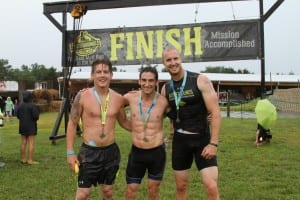
So…you have signed up for two races in one weekend. The first thing you should do is admit that you have a problem and are addicted to obstacle course racing (OCR). Now that you have done that, it is time to get ready to perform at your best for the events using these techniques:
Two Months Out:
Get your body used to back-to-back hard workout days, which helps simulate the fatigue you will experience during your race weekend. If you are doing back-to-back OCRs that are 5 miles or less, your hard workout days should look something like a VO2max workout (400m-1200m repeats) on one day and a lactate threshold workout (1-2 mile repeats) the following day. If you are doing long races like Spartan Supers or longer, your hard workouts should be back-to-back long runs or a long run followed the next day by a lactate threshold run . Use this technique once every other week, leading up to the race, so about three times total. It will help you get used to running fast on tired legs and the every other week will help prevent overtraining.
Two Weeks Out:
If these are high priority races, start your taper about two weeks out. This is flexible based off your fitness level and difficulty of the races. For example, back to back Warrior Dashes you could get by with a week long taper. However, if you are racing back to back events like a Spartan Beast and Ultra-Beast, a three week taper would be better. At one week out, you should avoid all hard workouts so you are well rested on your race days.
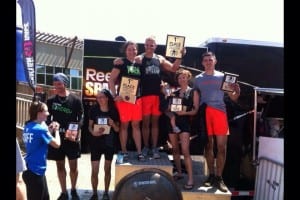
May 24: Claude Godbout wins first place again the following day continuing her undefeated streak of OCR victories inside Canada.
Two Days Out:
Be sure to rest those final two days before your race. You can take both days completely off or do a very easy workout on Thursday only. An easy workout is based off your fitness level, so it may be a slow 1-mile run for some athletes or could be a slow 5-mile run for other athletes. You are about to push yourself hard both days, so take it easy that way you arrive on the start line feeling fresh. You will not gain any fitness in those final two days, but you can hurt yourself, pull a muscle or fatigue yourself unnecessarily.
Race Weekend: Prioritize. You will not be able to perform at your best on both days. So figure out which race you want as your priority and where you will accept risk. If the Saturday race is your priority, then understand you may not be feeling great on Sunday. If Sunday is your priority race, be sure to hold back on Saturday’s race. If both races are on the same course, you may want to use Saturday as a reconnaissance of the course for your maximum effort on Sunday. You can go for maximum performance both days, but understand your second race may suffer and you are therefor accepting risk on Sunday's race.
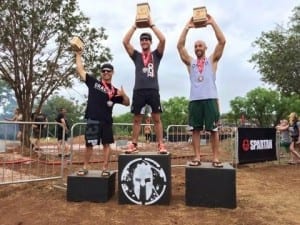
May 10: Nathan goes on to place 1st in the Sprint the next day (and the following week follows it up with two 2nd place finishes at the Super/Sprint weekend in Austin #2).
During Saturday’s Race: If you are racing for a goal placing (ex. podium finish, top ten, OCRWC qualification, top 50 in your age group), feel free to back off the intensity as long as it does not change your overall rank. For example, if you are far ahead of the racer behind you and far behind the racer in front, there is no need to destroy your body for a couple of seconds or minutes off your time if it does not change your overall ranking. The reduced effort for the last couple hundred meters or mile, will help reduce the overall stress of the first race.
Three Post Race Steps:
- Conduct a brief cool down after the race. This will help circulate the blood, flush waste products and ensure your body is ready to perform the following day. A cool down is typically about a 10-minute slow jog post race.
- In the first 15 minutes post race, you need to consume some carbohydrates and protein in a 3:1 ratio to maximize your ability to refill muscle glycogen and begin repairing muscles. A good option for this is non-fat chocolate milk, but that requires refrigeration. Another option, is Hammer Nutrition’s Recoverite, which has the same 3:1 ratio along with the amino acid L-Glutamine, known for its recovery benefits. The benefit of a supplement is that you can carry it in a shaker cup as a dry powder and just add cold water from the race venue. This liquid replenishment means your muscles begin refueling as soon as possible. To further refill your muscle glycogen, be sure to have a full meal within an hour. Not eating a full meal within an hour is a common mistake made by athletes not only when racing but also during weekly training sessions.
-
Finally, when you change clothes put on a pair of recovery compression leggings or socks. Recovery compression is typically tighter than performance compression. Companies like 2XU and Under Armour offer these types of garments. You can go with the full pants too, but trying to stuff your legs into recovery tights post race is often more challenging than half the obstacles on the course. The compression will further help circulate your blood without requiring you to move.
Saturday Night: Most of us are unwilling to fill up a bathtub with ice for a post-race ice bath. This simple trick, achieves a similar result with a fraction of the effort. Get in the shower and repeat the following three times: 1 min of showering with the water as cold as possible and 2 min of warm water. The alternating cold/hot temperatures will cause blood vessels to dilate and constrict further circulating your blood. To make this bearable, I will often just put my legs in the water.
These techniques do not guarantee success and in the examples provided, not every athlete used every technique. However, the more recovery techniques you use, the more likely you will be able to perform close to your maximum effort that second day.
If you want more great training tips like this, continue to follow MudRunGuide.com and be sure to check out “Strength & Speed’s Guide to Elite Obstacle Racing” hitting shelves in Spring 2016.
————————————————————-
Photos of Claude Godbout from Spartan Race Canada.
Photos of Nathan Palmer from Spartan Race.
Photos of Evan Perperis provided by Amy Perperis of Strength & Speed.
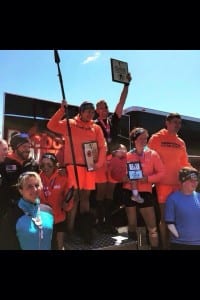
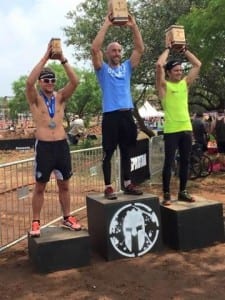
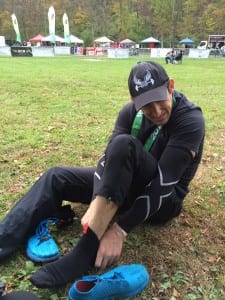
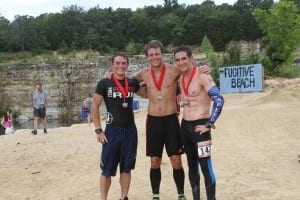



I am pretty sure I have done more back to back races than just about anyone and this article was awesome and provided some great tips I have not been using.
Thank you.
Evan this is a very good article. Thanks for sharing.